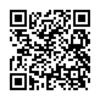Model:WRF-Hydro
From CSDMS
WRF-Hydro
Metadata
|
|
|
Introduction
History
References
| Nr. of publications: | 232 |
| Total citations: | 2926 |
| h-index: | 29 |
| m-quotient: | 1.12 |
| Featured publication(s) | Year | Model described | Type of Reference | Citations |
|---|---|---|---|---|
|
Arnault, Joel; Wagner, Sven; Rummler, Thomas; Fersch, Benjamin; Bliefernicht, Jan; Andresen, Sabine; Kunstmann, Harald; 2016. Role of Runoff–Infiltration Partitioning and Resolved Overland Flow on Land–Atmosphere Feedbacks: A Case Study with the WRF-Hydro Coupled Modeling System for West Africa. Journal of Hydrometeorology, 17, 1489–1516. 10.1175/JHM-D-15-0089.1 (View/edit entry) | 2016 | WRF-Hydro |
Model application | 96 |
| See more publications of WRF-Hydro |

